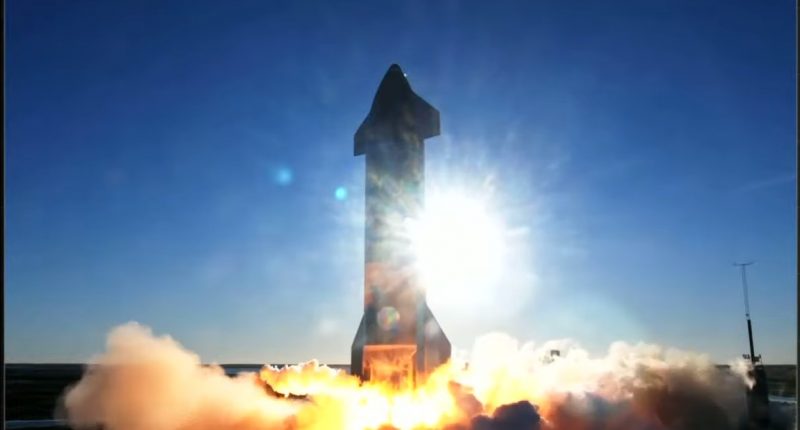Following the recent success of Starship’s fifth test flight, SpaceX has announced plans to launch its upcoming Starship test. This will be the sixth test flight of SpaceX’s flagship rocket (which measures nearly 400 feet), and will occur on November 18. The company will launch a live webcast nearly half an hour before liftoff, which interested users can watch on social media platform X. The flight test will mark the last test of Starship’s Block 1 model.
The sixth test flight will follow a suborbital trajectory, similar to the previous test, and will end with a controlled splashdown of Starship’s upper stage in the Indian Ocean. The core flight plan mirrors the previous test, and SpaceX has outlined new objectives to further develop Starship’s systems. The test flight will include a re-ignition attempt of a Raptor vacuum engine during the rocket’s coast phase — something that the space company had originally attempted on an earlier flight but was forced to abort at that time. If SpaceX succeeds now, then it will mean that SpaceX is now capable of conducting deorbit burns. For those who are unaware, a deorbit burn happens when rockets perform a maneuver to return to the planet’s atmosphere, and is a key requirement for future orbital missions.
“Starship’s fifth flight test was a seminal moment in iterating towards a fully and rapidly reusable launch system. On the first attempt, the Super Heavy booster successfully returned to the launch site and was caught by the chopstick arms of the launch and catch tower at Starbase. Starship’s upper stage went on to demonstrate several improvements, resulting in a controlled entry and high accuracy splashdown at the targeted area in the Indian Ocean,” SpaceX noted in an official statement. “The next Starship flight test aims to expand the envelope on ship and booster capabilities and get closer to bringing reuse of the entire system online. Objectives include the booster once again returning to the launch site for catch, reigniting a ship Raptor engine while in space, and testing a suite of heatshield experiments and maneuvering changes for ship reentry and descent over the Indian Ocean.”
Another major focus for Flight 6 is assessing Starship’s thermal protection systems, which is a critical component for ensuring safe re-entry for the spacecraft from space. The upcoming flight will feature new secondary thermal protection materials, and the spacecraft’s heat shield tiles, which cover key areas to manage extreme temperatures during descent, will also be tested further. In fact, some tiles will be removed from both sides of the rocket on purpose for data-gathering purposes. Alongside this, the rocket’s aerodynamic control will be tested as well.
Other areas of focus will be on enhancing booster recovery – something that comes on the wake of the company’s successful catch of the Super Heavy booster on Flight 5. At that time, SpaceX successfully caught the booster using the launch tower’s “Mechazilla” chopstick arms, but according to a recent debrief, the catch nearly failed due to a misconfiguration in the booster’s spin gas system. SpaceX, in its official statement, noted that it will be bringing additional redundancies to the booster’s propulsion system.
The Tech Portal is published by Blue Box Media Private Limited. Our investors have no influence over our reporting. Read our full Ownership and Funding Disclosure →






